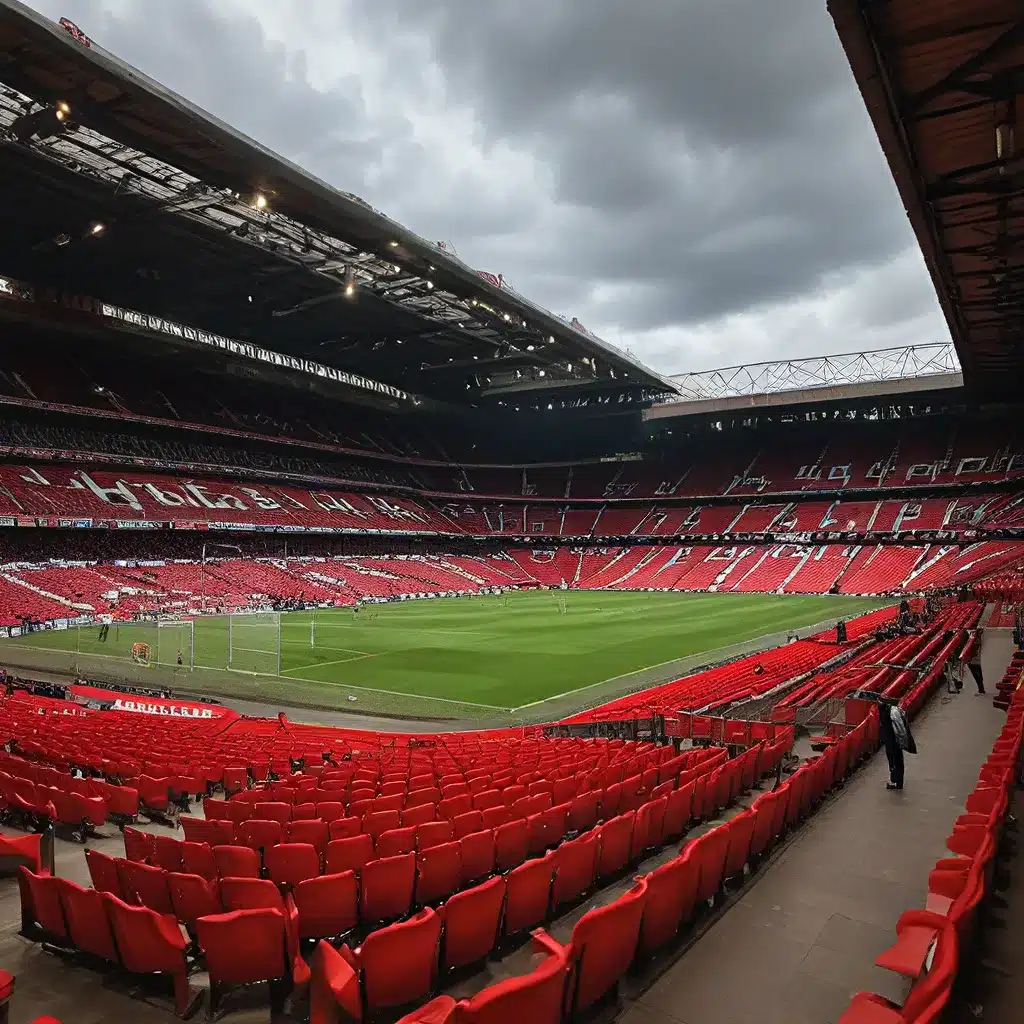
A Century-Old Mecca for Football Fans
Old Trafford, home of the legendary Manchester United football club, has long been revered as the “Theatre of Dreams” – a hallowed ground that has witnessed the triumphs and tribulations of one of the world’s most storied sporting institutions. Nestled in the heart of Greater Manchester, England, this iconic stadium has stood as a testament to the enduring passion and unwavering loyalty of United’s devoted fanbase for over a century.
Opened in 1910, Old Trafford has evolved from a modest 80,000-capacity arena to a sprawling, state-of-the-art facility capable of accommodating over 74,000 spectators. Its transformation has mirrored the remarkable rise of Manchester United, a club that has etched its name indelibly into the annals of football history. From hosting the first FA Cup Final replay in 1911 to serving as a regular venue for England national team matches, Old Trafford has been the stage upon which some of the sport’s most iconic moments have unfolded.
The stadium’s origins can be traced back to 1909, when John Henry Davies, the club’s chairman at the time, made the decision to construct a new home for Manchester United. Designed by renowned Scottish architect Archibald Leitch, the original structure boasted a capacity of 100,000 and featured seating in the south stand, with the remaining three stands left as open terraces.
Wartime Devastation and Rebirth
However, Old Trafford’s journey has not been without its challenges. During the Second World War, the stadium was requisitioned by the military and subsequently suffered extensive damage from German bombing raids in 1940 and 1941. The club was forced to share its crosstown rival’s Maine Road stadium for nearly a decade while Old Trafford underwent a painstaking reconstruction.
The post-war years saw the stadium gradually regain its former glory, with the addition of new stands and the installation of floodlighting, allowing for night matches. The 1960s brought further modernization, as the iconic United Road stand (now the Sir Alex Ferguson Stand) was redesigned with a cantilever roof, providing unobstructed views for spectators.
The atmosphere at Old Trafford has long been one of the most electrifying in world football, with the Stretford End in particular renowned for its passionate and vociferous support. The stadium’s rich history has given rise to countless memorable moments, from the emergence of legendary players like George Best, Denis Law, and Bobby Charlton, to the dominant eras of managerial icons such as Sir Matt Busby and Sir Alex Ferguson.
Expansion and Modernization
As Manchester United’s stature and success grew, so too did the need to expand and modernize Old Trafford. The 1990s and 2000s saw a series of ambitious redevelopment projects that transformed the stadium into the largest club football ground in the United Kingdom and the twelfth-largest in Europe.
The addition of second tiers to the North-East, North-West, and West (Stretford End) stands, as well as the expansion of the East Stand, increased the stadium’s capacity to over 75,000. These developments not only enhanced the matchday experience for supporters but also reflected the club’s unwavering commitment to providing world-class facilities for players, staff, and corporate partners.
The unveiling of the Sir Alex Ferguson Stand in 2011 and the renaming of the South Stand as the Sir Bobby Charlton Stand in 2016 further cemented the stadium’s close ties to the club’s most revered figures. These tributes to United’s legendary managers and players serve as a powerful reminder of the deep-rooted traditions and values that have shaped the institution’s identity over the decades.
A Global Sporting Destination
In addition to its role as the primary home of Manchester United, Old Trafford has also played host to a diverse array of sporting events and cultural spectacles. The stadium has welcomed international football matches, including games during the 1966 FIFA World Cup, UEFA Euro 1996, and the 2012 Summer Olympics. It has also been a regular venue for the Rugby League Premiership Final and Super League Grand Final, testament to its status as a premier destination for major sporting events.
Beyond the realm of football and rugby, Old Trafford has opened its doors to a variety of other activities. The stadium has hosted concerts by renowned artists such as Bon Jovi, Genesis, and Bruce Springsteen, further solidifying its reputation as a versatile and iconic venue. It has also been the setting for private functions, including weddings and corporate events, allowing visitors to experience the magic of this hallowed ground in a more intimate setting.
The Future of Old Trafford
As Manchester United continues to evolve and adapt to the ever-changing landscape of modern football, the future of Old Trafford remains a subject of great interest and speculation. Plans are currently in the works to potentially redevelop the Sir Bobby Charlton Stand, with the goal of increasing the stadium’s capacity to around 88,000 and enhancing its facilities to meet the growing demands of the club and its global fanbase.
However, any such redevelopment is not without its challenges, as the proximity of the stadium to surrounding infrastructure, including a railway line and residential areas, poses logistical hurdles that must be carefully navigated. The club’s management has acknowledged the complexity of the situation, recognizing the need to balance their ambitious plans with the preservation of Old Trafford’s unique character and heritage.
Regardless of the specific changes that may be in store, one thing remains certain: Old Trafford will continue to hold a special place in the hearts of Manchester United supporters and football enthusiasts worldwide. As the ultimate stadium journey for any avid fan, this hallowed ground will undoubtedly remain a testament to the power of sport to captivate, inspire, and unite people from all walks of life.

